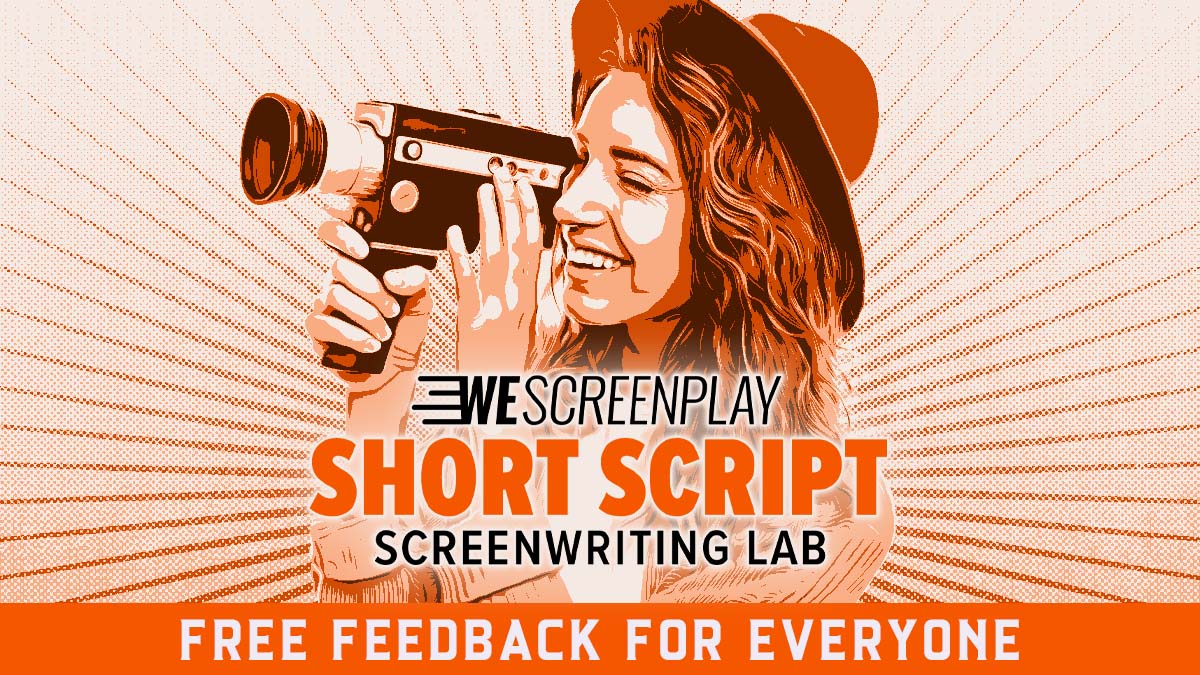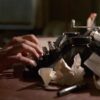
The Amazons battling Germans on the beach in WONDER WOMAN.
The Bride facing off with O’Ren in KILL BILL: VOLUME 1.
Inigo Montoya avenging his father in THE PRINCESS BRIDE.
Audiences love a stellar fight scene! With high stakes and thrilling combat, fight scenes are some of the most memorable moments in a story with the combined talents of everyone on a production showcased in one awesome, explosive, electrifying, edge-of-your-seat action sequence. Before the stunt performers, stunt coordinator, or fight choreographer get involved, the best fight scenes start with a great script.
Below are some tips on how to write a fight scene and how to format a fight scene in your screenplay, along with notable examples to show you how the pros do it.
Table of Contents
Fight Scene Tip #1: You Don’t Need Combat Training
Writing a sensational action sequence doesn’t require martial arts knowledge or stage combat and weapons training. All you need is your screenwriting skills! I know, because I’ve done it.
I’m a writer, producer, and action actor that specializes in sword fighting.
However, before I even picked up a sword or knew anything about stunts, I wrote my first action script: PROTECTRESS, a fantasy action short that serves as a proof of concept for a feature. That film, which I produced and star in, won a dozen awards on the festival circuit, including Best Action.
I drew upon my years of experience as a script reader in understanding what works and what doesn’t on the page when it comes to action. Knowing how to write action didn’t come from knowing how to sword fight. It came from knowing how to write a script.
This is good news! It means if you’ve already been studying the craft of screenwriting, you already have the tools you need to write a kick-ass fight scene.
Fight Scene Tip #2: Avoid Over-writing the Action
Screenwriters tend to think they need to describe the moves in a fight, so too many details can be included in fight scene descriptions. Including every blow in a battle isn’t necessary. Unless it’s important to the story, specifics about fight moves, blocking, stage combat, or weaponry are not needed. It’s actually the stunt coordinator and fight choreographer that bring that expertise.
Some advice from stunt coordinator Mario Perez:
“Writers inexperienced with writing action tend to do the opposite of leaving things out. They tend to write in far too much detail. A good stunt coordinator and fight choreographer will be more limited than helped by description of actual moves. Unless a specific move is a character plot point, it’s best to avoid including them…When the scene is described in terms of character beats and plot points rather than specific physical movements it’s usually an indicator that a fight can be great.”
Fight Scene Tip #3: Include World-building Details
Writers can swing to the other side of over-writing a fight scene to leaving the action entirely up to the production. In development, a note I’ve given on fight scenes is to be more specific with the description.
Crafting descriptions in any screenplay is a balance between effective word choice and not getting too verbose. Don’t be so vague that it’s difficult to envision the action when reading it on the page. This takes away tension and suspense, which makes for a less exciting read.
A solid example of this is the infamous bullet-dodge scene from THE MATRIX. Details included in the description of the fight scene, like “thought-speed” and “the liquid space of BULLET-TIME,” serve the story by including world-building specificity that evokes the unique visual style of the action. Done well, this type of action writing can bring a sci-fi or fantasy world to life in a screenplay.
In addition, notice how the description doesn’t convey every single move of the fight, as mentioned in Tip #2. However, there’s enough specificity included to help the reader visualize and grasp the feeling of the fight when reading it.
Fight Scene Tip #4: Show Character Development
Writing great action starts with the core of every good script: character. Action is unspoken dialogue. When words can no longer be used and something must be done, action is taken. Thus, we have a fight scene.
The action stems from the development of the characters: their journey up until that point, how they’re feeling in the moment, their relationship with who they’re fighting with, level of fighting skill, and if the character has the desire to actually fight or hurt others. Their intention in the fight drives the action.
In the following fight scene from THE DARK KNIGHT RISES, note how Batman and Bane’s character development contributes to how they respond to each other – not just in dialogue, but in the fight as well.
Fight Scene Tip #5: Break Description Up into Moments
To make your fight scene exciting to read, consider pacing when crafting descriptions. Fight scenes are not that much different from any other descriptions. Avoid blocks of action description and highlight important moments in the scene.
If you’ve watched the examples so far, you might have noticed that the descriptions are only a sentence or two, and they tend to be grouped by moments. You can see this reflected in the way the final film turned out.
Here’s a good example that shows how to break up the action into moments on the page. This is one of my favorite battle scenes, the Battle of the Bastards from GAME OF THRONES.
This is a massive battle with multiple characters on a large battlefield. Notice how scene headers are used to move from one location on the battlefield to another as we witness the chaos unfolding. The use of scene headers in moving from one part of a large location to another keeps it from becoming too chaotic on the page.
An important moment to make note of is the decision point around four minutes in when Jon Snow decides to confront Ramsay’s entire army all by himself (wouldn’t we all?). The pacing slows down with emotional emphasis given to the moment by separating it out on the page rather than including it in a block of description.
Fight Scene Tip #6: Move the Story Forward
Action just for action’s sake does not make for a good fight scene. Tip #4 emphasizes character development, and also keep in mind the purpose behind any scene – to move the story forward.
Stunt coordinator Mario Perez has this to say about how he can tell right away that a fight scene is great:
“When I am reading a script, my first indication that a fight scene has the potential to be great is when the action logically flows from character and circumstance. An unmotivated fight scene, unless it is for the sake of comedy (where the lack of motivation is the joke), is a dead giveaway that no matter what we do, the fight scene will not be great.”
When Inigo Montoya finally avenges his father’s death in THE PRINCESS BRIDE, it’s an important plot point. It’s not just a sword fight. Inigo achieves his life’s goal while assisting Wesley, aka The Dread Pirate Roberts, in his quest.
This fight scene gives catharsis for the audience to finally see Inigo reach the goal he’s had since we first met him, and it furthers the story by eliminating an antagonist that’s in the protagonist’s way.
How to Write Better Fight Scenes
Vanquish any doubts you have about writing action! Use these fight scene tips to guide you to make your conflict leap off the page and pump up the action in your screenplay.
Have a feature-length action screenplay? Submit it to our Feature Screenwriting Competition!

 Joanna Ke is an award-winning, half Taiwanese actor, writer, producer, and trained sword fighter. Her foundation as a creative producer and screenwriter is built on nearly a decade of experience as a professional script reader in development and acquisitions. She studied screenwriting with the late, great Syd Field, and as an actor, has had the honor of working with director Cameron Crowe. Her films have won BEST ACTION and BEST FANTASY awards, and her acting has won BEST PERFORMANCE and BEST VILLAIN accolades.
Joanna Ke is an award-winning, half Taiwanese actor, writer, producer, and trained sword fighter. Her foundation as a creative producer and screenwriter is built on nearly a decade of experience as a professional script reader in development and acquisitions. She studied screenwriting with the late, great Syd Field, and as an actor, has had the honor of working with director Cameron Crowe. Her films have won BEST ACTION and BEST FANTASY awards, and her acting has won BEST PERFORMANCE and BEST VILLAIN accolades.
Wielding her broadsword is a favorite, both on and off camera.
















